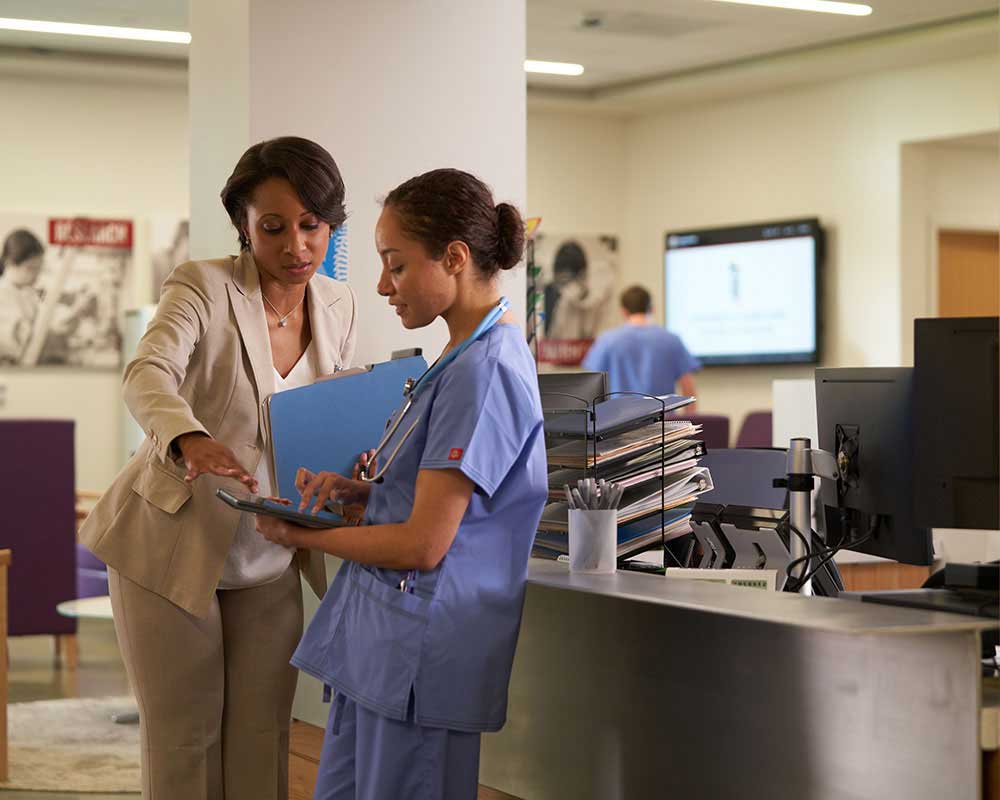Just How to Boost Performance in Medical Administration with Modern Devices
Just How to Boost Performance in Medical Administration with Modern Devices
Blog Article
Finest Practices in Medical Administration for Improving Performance and Decreasing Expenses
In the ever-evolving landscape of health care, the pursuit of best methods in clinical management is extremely important for improving efficiency and curbing expenditures. By integrating innovative technologies such as digital wellness records and telemedicine, doctor can improve operations and boost individual treatment. Modern technology alone is not a remedy; maximizing source allocation and cultivating collaborative communication among care groups are similarly critical. As companies make every effort to stabilize high quality and price, what strategies should be focused on to accomplish these dual objectives? The solution to these concerns hold the secret to a much more lasting health care system.
Leveraging Advanced Modern Technology
The assimilation of digital solutions right into healthcare systems has actually transformed the way centers run, enhancing procedures and enhancing individual treatment. By centralizing individual details, EHRs get rid of the requirement for difficult documentation and assist in seamless interaction amongst health care providers.
Telemedicine is another technical innovation that has reinvented person interaction. It supplies ease for both clients and health care professionals by enabling remote consultations, which can reduce the requirement for in-person sees and maximize appointment scheduling. Additionally, telehealth platforms can expand healthcare access to rural or underserved areas, linking voids in care distribution.
Moreover, using Expert system (AI) and device understanding is ending up being significantly widespread in anticipating analytics, permitting for early detection of potential health concerns and more educated decision-making. These technologies, when incorporated successfully, can boost diagnostic accuracy and individualize person treatment strategies, ultimately bring about enhanced health care end results and operational performance.
Optimizing Resource Allotment
By purposefully managing sources such as employees, tools, and finances, medical care centers can dramatically improve their operational performance, improve individual results, and decrease unnecessary expenses. The initial step in optimizing resource appropriation entails carrying out an extensive assessment of existing possessions and identifying locations where sources may be underutilized or exhausted.
Focusing on resource allocation based upon client needs and solution demands is important. This entails lining up resources with high-demand locations, such as emergency treatment or specialized treatments, to guarantee prompt and efficient patient treatment. Executing adaptable staffing designs can also enhance labor resources by readjusting personnel appropriation in action to fluctuating individual volumes. In addition, embracing telemedicine and other technological solutions can ease physical source restrictions by offering alternative methods for patient-provider communications.
Monetary sources should be thoroughly monitored and assigned with critical insight to support both short-term operational requirements and lasting institutional goals. This includes investing in training programs that enhance personnel expertises and taking on energy-efficient practices that decrease operational expenses (medical administration). Inevitably, a maximized source allocation technique promotes a sustainable health care setting that is receptive, reliable, and monetarily sensible
Streamlining Operations Procedures
When medical care centers aim to improve operational efficiency, improving process procedures comes to be a crucial emphasis. Reliable operations decrease redundancy, remove unnecessary steps, and enhance coordination among healthcare specialists. This approach not only increases solution distribution however likewise enhances the quality of client care.

Next, innovation integration plays a considerable role in enhancing operations. Executing digital health records (EHRs) and digital physician order entrance (CPOE) systems lowers documents, minimizes human error, and makes certain info is available to all pertinent personnel. Furthermore, leveraging telemedicine systems can streamline client appointments and follow-ups, reducing the stress on physical facilities.

Eventually, streamlined process result in cost reductions and improved client fulfillment, promoting an extra lasting health care atmosphere.
Enhancing Information Administration
Building upon streamlined workflows, optimizing data management becomes a vital part ahead of time medical care management. Effective data management systems are essential for maintaining accurate person documents, improving decision-making, browse around this site and ensuring conformity with regulative requirements. By implementing durable information administration solutions, medical care centers can enhance the top quality of individual care while at the same time decreasing operational prices.
One secret facet of improving data monitoring is the combination of advanced digital health and wellness document (EHR) systems. These systems assist in the seamless exchange of person info throughout different divisions, minimizing duplication of tests and minimizing mistakes. A well-designed EHR system sustains data analytics, allowing doctor to recognize trends and make notified decisions relating to patient treatment.
Moreover, securing patient data is extremely important. Taking on extensive cybersecurity actions, including security and regular audits, guarantees the honesty and confidentiality of delicate details. This not only secures people however additionally keeps the institution's track record.
Spending in staff training is one more crucial aspect. Educating healthcare experts on information monitoring methods improves their ability to successfully make use of modern technology, resulting in enhanced individual end results. Finally, boosting information management through advanced innovation and detailed training is crucial for attaining performance and price reduction in medical management.
Fostering Collaborative Interaction
An essential part ahead of time clinical management is cultivating joint interaction amongst healthcare professionals. Effective interaction is extremely important for ensuring smooth person treatment, maximizing treatment results, and reducing errors. By encouraging open discussion and control throughout multidisciplinary teams, healthcare organizations can boost their operational efficiency and lower unneeded expenses.
Central to this method is the integration of interaction modern technologies such as electronic health documents (EHRs) and protected messaging platforms, which promote the quick exchange of important client information. These devices allow health care service providers to gain access to and share information in real time, ensuring that all staff member are notified and straightened in their decision-making processes. Regular group meetings and interdisciplinary rounds can additionally promote a society of partnership and responsibility.
Educating programs concentrated on boosting communication skills are likewise essential. These go right here programs can assist personnel establish the capability to share details clearly and listen actively, therefore minimizing misunderstandings and cultivating a supportive workplace. In enhancement, read review embracing standardized interaction methods, such as SBAR (Situation, Background, Analysis, Suggestion), can streamline the exchange of information, guaranteeing that vital information are communicated succinctly and successfully. Ultimately, fostering collaborative communication results in enhanced medical care distribution and price savings (medical administration).

Final Thought
Integrating innovative modern technology, such as electronic wellness documents and telemedicine, together with maximized source allocation and streamlined process processes, is crucial for improving efficiency in medical management. Effective data administration and cultivating collective interaction amongst healthcare teams are crucial for minimizing redundancies and improving care quality. By prioritizing preventive care and engaging in quality renovation efforts, health care companies can achieve substantial price savings and boosted individual end results, consequently making certain sustainable health care shipment in a progressively complex environment.
Report this page